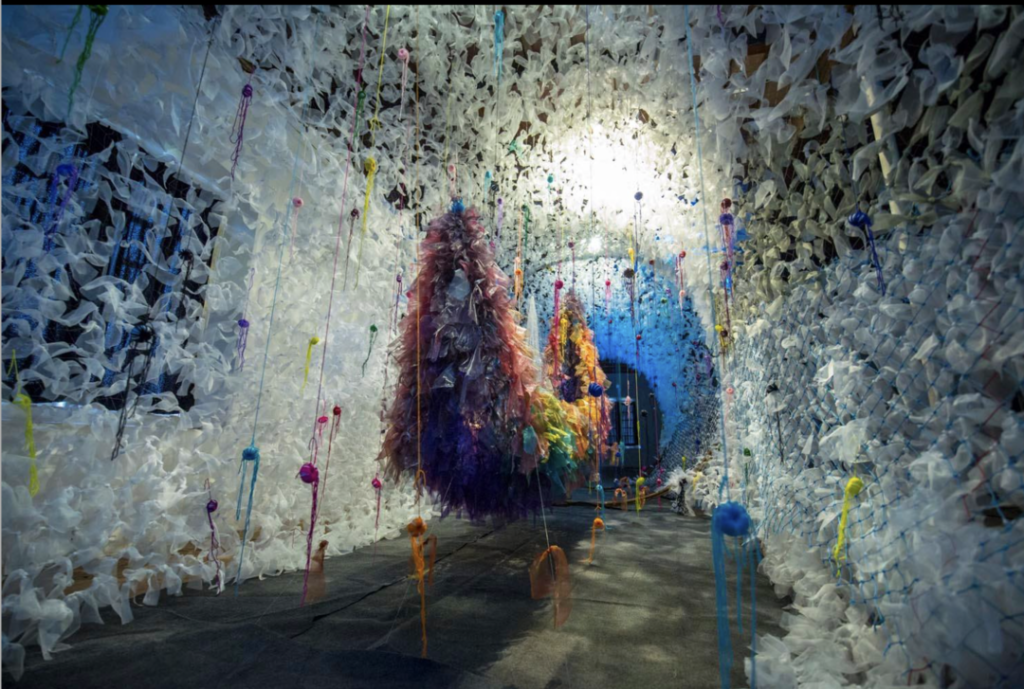Musings by Shekhar Nambiar
Holi is a few days away. Soon, we will have a riot of colours streaming through our towns, villages and cities.
Like other Indian festivals, Holi too has a symbolism and purpose. The joy and celebration in the air aside, there is the tale of triumph of good over evil as seen in Holika dahan, or burning of Holika a day prior to the main festival. Belief has it that the burning of the asuri on the pyre led to the salvation of her nephew Prahlada.

The colours during Holi symbolise the spirit of joy, brotherhood and egalitarianism. Traditionally, Holi colours are applied on one another in almost total disregard to caste, creed or religion.
Also read: Quakes and infernos
Faces with colours also make the festivities special. There’s anonymity as colour is applied on faces. The fond embraces are spontaneous and without malice or ulterior motive.
Art and aviation
The striking richness of the colours takes us to the ongoing Kochi-Muziris Biennale where Smitha GS, an artist from Kerala’s Malabar region, was recently feted at an unusual event and place.
Of all places, her work was celebrated in the hangar of a plane in Thiruvananthapuram in the presence of Kerala’s Minister for Tourism PA Mohammed Riyas and Kochi-Muziris Biennale founder Bose Krishnamachari.
In a confluence of art and aviation, the recently privatised airline Air India Express unveiled Smitha’s work on the tail of one of its planes, a Boeing 737-800.
Also read: Recycle or perish

At a simple and tastefully organized function, Bose and the Minister pressed the button to open the sliding door to reveal the plane with Smitha’s colourful artworkson either side of the tail.
Air India Express has a tradition of having artworks on its aircraft tails that not only promote artists and their work but also act as a window to the land and culture of India.
This is a legacy of JRD Tata, the pioneering founder of the airline, who was as enthusiastic about art as he was known for his passion for aviation. The airline’s head office at Nariman Point in Mumbai is full of prized art works collected over time.
Also read: Technology in workspace’s changing face
Smitha’s work on the Boeing aircraft tail is the result of the coming together of Air India and Kochi-Muziris Biennale. As one airline official said, the Biennale aims to promote art, landand culture. With Kochi-Muziris Biennale Foundation’s adaptation of Smitha’s artwork on the tail of the aircraft, the airline has 26 planes with painted tail art creations by artists. These even include adaptations from Raja Ravi Varma’s works.

The work
Just what is the artist’s work all about? Her inspiration came to her during the Covid time. She wanted to kill the sheer boredom and frustration of being confined indoors.
Her artwork is full of colour, joyous and a celebration of life and nature.
The rich colours used in the works also reflect those used in theyyam and folklore of the region.
Also read: Vani goes silent
The art reflects the rich diversity of nature and life of all form from Smitha’s land. With a rich tapestry of green colour, it has vibrant and bright colours that stands out prominently on the aircraft tail.
In a recent media interview, she said her work recreates colourful landscapes, with chameleons, insects and other organisms. The metaphysical work draws the “enigma” of the tiny creatures with those of the hills and flowers.
Air India Express officials are hopeful of their airline doing well in all the four international airports in the state. Kerala’s tryst with the Tata’s goes a long way back, to as early as 1935 when their first plane landed in Thiruvananthapuram. The association with the Biennale should help the airline stand in good stead, especially as it goes through the process of the integration of its verticals, Air India, Air Asia, Vistara and Air India Express.

Travel destination
Now with a piece of art by a local artist participating in the Biennale
firmly etched on the aircraft’s tail, the festival is transported beyond boundaries, literally and figuratively. After all, the biennial is not merely a showcase of art but also, more broadly, it’s about education, the relevance of art, and taking art, the installations and the artists’ canvases to a different plane altogether.
The biennale, which ends in a few weeks this month, may be about Kochi or the city where the exhibition is situated. But the art in it is universal involving creative minds from all over the world, with the works and installations as contemporary as it can get.
The biennale gives another reason for people to travel to the historic and multicultural city of Kochi.
Also read: Bottlenecks everywhere




